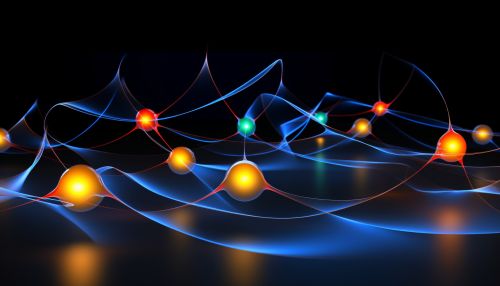Quantum Electrodynamics
Introduction
Quantum electrodynamics (QED) is the relativistic quantum field theory of electrodynamics. In essence, it describes how light and matter interact and is the first theory where full agreement between quantum mechanics and special relativity is achieved. QED mathematically describes all phenomena involving electrically charged particles interacting by means of exchange of photons and represents the quantum counterpart of classical electromagnetism giving a complete account of matter and light interaction.


History
The development of quantum electrodynamics spans several decades, starting in the early 20th century. The initial quantum mechanical description of the electromagnetic field was completed by Paul Dirac in the late 1920s with his quantum theory of radiation. Significant progress was made in the late 1940s by Richard Feynman, Julian Schwinger, and Sin-Itiro Tomonaga, who jointly received the Nobel Prize in Physics in 1965 for their work on QED.
Principles
Quantum electrodynamics is based on the quantum mechanics of particles, in this case, the photon and the electron, and the classical theory of electrodynamics. The fundamental interactions of charged particles are defined by the exchange of virtual photons. These interactions are represented in a visual and calculational aid known as the Feynman diagram.
Feynman Diagrams
Feynman diagrams are graphical representations of the mathematical expressions describing the behavior of subatomic particles. The diagrams are named after Richard Feynman, who introduced them in the 1940s. Feynman diagrams are used in quantum electrodynamics to systematically calculate the effects of the electromagnetic forces on charged particles.
Mathematical Formulation
The mathematical structure of QED is built from the elements of quantum mechanics and the special theory of relativity. The key components of this structure are the Dirac equation, which describes the motion of charged particles such as electrons, and the Maxwell equations, which describe the motion of photons.
Applications
Quantum electrodynamics has been used to provide a theoretical framework for many areas of physics including the study of electromagnetic interactions in atomic and molecular systems, the theory of superconductivity, and the quantum theory of radiation. It also plays a key role in the standard model of particle physics.
Challenges and Criticisms
Despite its successes, quantum electrodynamics is not without its challenges and criticisms. One of the main issues is the problem of infinities in the calculations, known as the renormalization problem. This issue was resolved by the work of Feynman, Schwinger, and Tomonaga, but it remains a controversial aspect of the theory.
